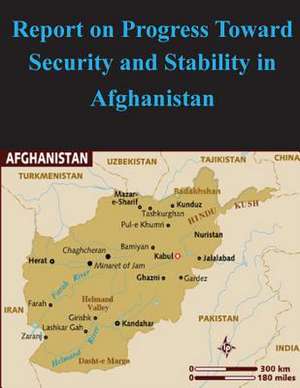Report on Progress Toward Security and Stability in Afghanistan
Autor Department of Defenseen Limba Engleză Paperback
Preț: 103.27 lei
Nou
Puncte Express: 155
Preț estimativ în valută:
19.76€ • 20.56$ • 16.32£
19.76€ • 20.56$ • 16.32£
Carte disponibilă
Livrare economică 25 martie-08 aprilie
Preluare comenzi: 021 569.72.76
Specificații
ISBN-13: 9781502867704
ISBN-10: 1502867702
Pagini: 132
Dimensiuni: 216 x 279 x 7 mm
Greutate: 0.32 kg
Editura: CREATESPACE
ISBN-10: 1502867702
Pagini: 132
Dimensiuni: 216 x 279 x 7 mm
Greutate: 0.32 kg
Editura: CREATESPACE
